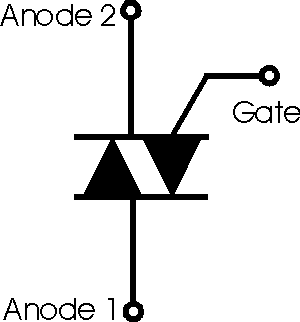Electronic components used in surge protectors
Surge protection components fall into two general categories:
-
Arc Gaps
-
Semiconductor
The following components fall into the Arc Gap category:
-
Gas Discharge Tube (GDT)
-
Radioactive Gas Discharge Tube
-
Air Gap
-
Carbon Electrode Gap
The following components fall into the semiconductor category:
-
Zener Diode (TVS or Transient Voltage Suppression Diode)
-
Silicon Avalanche Diode (SAD)
-
Bidirectional Transistor
-
Thyristor
-
Punch-through Diode
-
Rectification Diode
-
Metal Oxide Varistor (MOV)
Without going into an exhaustive explanation of each device, I will give a rundown on why the device is or is not suitable for protecting Ethernet GigE data circuits.
Gas Discharge Tubes - These are a great improvement over air gaps. They put the gap electrodes in a sealed container with a gas that determines breakdown voltage. They are low capacitance and once fired are low impedance. Both characteristics are great for data. But they are relatively slow. They can take up to a microsecond or more to really wake up and do their job. They are also expensive. Better surge protectors use a GDT operating in parallel with other components that are faster.
Radioactive GDTs are really not available anymore. They had radioactive gas inside that made them fire faster.
Air Gaps are not really used however certain testing bodies seem to think a feature called a Back Up Gap (BUG) be added to surge suppression devices. The problem is, a BUG is normally two or three conductors on a printed circuit board that are extremely close, like .005" or closer. History has shown that BUGS get contaminated with dirt and bugs. Many failures have be traced to surge protectors that use BUGs. The use of BUGs was primarily a thing in the USA for a number of years.
Carbon Electrode Gaps is an older technology used primarily on land line telephone circuits. It is not suitable for data.
Zener Diodes are frequently used in surge protectors. They are a diode that is operated in reverse. So it is designed to have a bias voltage that is backward from its conduction direction. The reverse voltage causes a depletion region at the junction. If a the reverse voltage gets high enough, it will start to conduct at its "zener voltage". Zeners are typically used in voltage regulator circuits.
Silicon Avalanche Diodes (SADs) are a special type of zener designed to go to a low impedance state once they fire. They differ from normal zeners as they try to present the lowest voltage drop possible when in reverse conduction. They are extremely fast, some offering breakdown speeds in the nanosecond range. They have low leakage which is always a plus for a data application. Their capacitance is too high for GigE circuits unless paired with a rectification diode. Sometimes SADs are also called TVS as a generic term.
Bidirectional Transistor These devices are frequently combined at the die level to create Thyristors
Thyristor These devices are similar to SADs but are slow to act. They are found in power protection circuits but not in the better data surge protectors.
Punch Through Diode - Very low voltage zener type of action. Sometimes found on the internal data circuits of network devices. They do not tolerate much energy so they are more for electrostatic discharge (ESD) protection.
Rectification Diode - While not an overvoltage or surge device, it is used with SADs and other components to channel surges and to decrease overall circuit capacitance. Surge protectors that only use SADS or Thyristors will produce more loading potentially causing CRC and other errors to GigE data circuits.
Metal Oxide Varistor (MOV) Slow to act, leaks current and is physically large. This is the workhorse component for many 120 VAC power circuits. They are usually a large disk component. They will take repeated strikes and fail in the shorted condition. Frequently a device that has failed due to surge will have the MOVs physically damaged via cracks or explosion. Not uncommon to find MOV fragments inside a power supply that has been subject to power line conveyed lightning.




